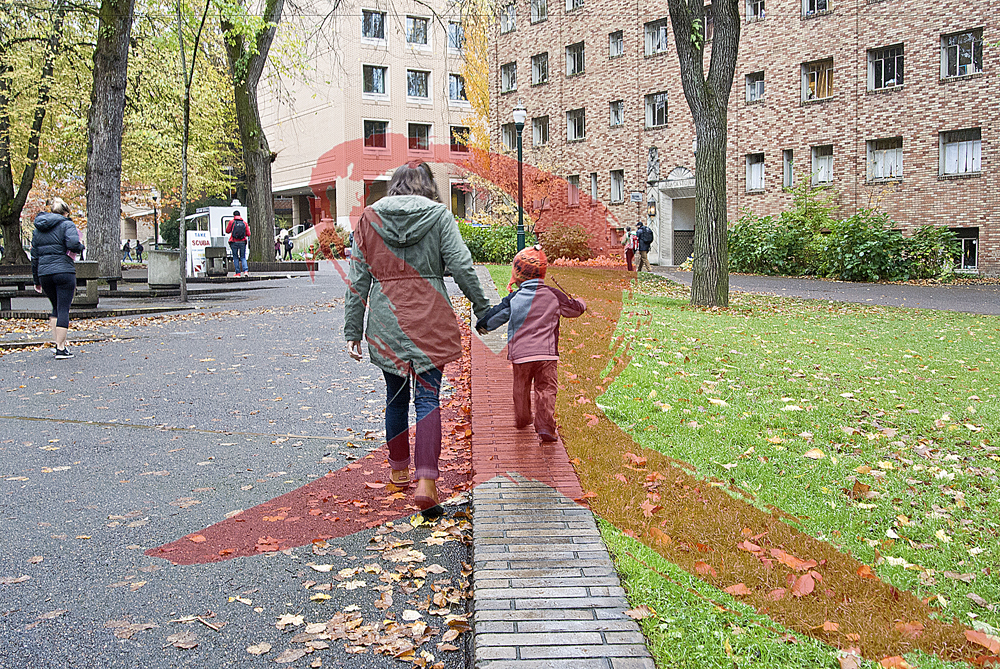Tax policy study hall
Where does your tax money go?
That’s the question Lincoln High School students had to answer as they spent a week and a half learning to balance a simulated 2005-07 state budget.
Sarah Liebman, a Portland State student in the Graduate Teacher Education Program, collaborated with Steve Novick, communications director at Citizens for Oregon’s Future, to develop a program that would help students understand the correlation between taxes and government services. It was a program developed out of their mutual belief that most people in the United States have no idea where their tax money goes.
“There’s a crisis in democracy in the state and in America,” said Novick. “People don’t know where tax dollars go.”
According to a 2000 study by Robert Sahr of Oregon State University, 75 percent of Oregonians could not name the state income tax as the largest source of state government funding.
The high school economic students Liebman worked with initially believed taxes went to upkeep or the government. According to Citizens for Oregon’s Future, a tax advocacy group, 47.8 percent went to K-12 public schools in 2003-2005, 21.3 percent went to health, children, senior and disabled services, 14.5 percent to public safety and courts, 10.8 percent to universities and colleges, 5 percent of total state, local and federal dollars went to sectors like parks and libraries, and .58 percent to welfare.
Novick says that there’s a growing disconnect with Americans over understanding taxes and the programs they go too, and Citizens for Oregon’s Future is working on raising discussions about it.
The Lincoln High School state budget project drew the attention of several Oregon senators and representatives. State Treasurer Randall Edwards; State Sens. Richard Devlin and Ginny Burdick; State Reps. Gary Hanson, Mary Nolan and Joe Smith; and Laurie Wimmer Whalen of the Oregon Education Association all attended the student presentations on Oct. 26.
Liebman divided students to represent three categories of state tax: education, human services and public safety. They had to predict the growing costs in these sectors and take 5.5 percent out of the total state budget, with the option of raising taxes. Students debated where to cut funding and where to raise taxes. The students presented graphs while detailing the reasons behind cuts they made.
A group of students that represented the department of Health and Human Services cut 61 percent, or $100 million, out of programs for seniors and people with disabilities. The reason: “we care more about the future than the past.”
It drew laughs from the audience, particularly the state senators and representatives. But it was an explanation that highlighted the difficulty of how a real state budget is balanced and the affects tax cuts have on individuals.
Lincoln junior Grant Bunnage said, “One person is not that much, but the consequences are for more than one person.”
Each senator and state representative spoke of their own experience with balancing the real Oregon state budget, discussing the politics related to the cuts the students made as well as the current state of Oregon’s financial crisis.
“Welcome to the budget train wreck we’ve been dealing with for the last three years in Salem,” Edwards said. “There’s not enough revenue to meet the needs of the state…Oregon has had to do about every financial trick possible to stay afloat. We can’t continue to look at cutting and cutting and cutting. This is a very tough time for Oregon and it’s not going to get easier.”
According to Citizens for Oregon’s Future, the typical Oregon home-owning family with a median income of $56,200 pays $11,900 in state and federal income taxes.
Oregon ranks forty-sixth in the nation for total state and local taxes paid as a percentage of income. Taxes on Oregonians are relatively low compared to other states.
“The reality is the tax structure is complex. It becomes difficult to get a clear understanding of what taxes are paying for,” Devlin said.
Liebman wanted students to understand tax structure because, although most of them aren’t of voting age, it’s a significant part of their world. They are affected by the choices others make and, through their own choices with this project, they realized what an impact that creates.
“We need to bring the outside into the classroom,” Liebman said, “and we need to bring the classroom outside.”
Bart Millar, Lincoln High School economics teacher, is planning on implementing this program in his future classes.



